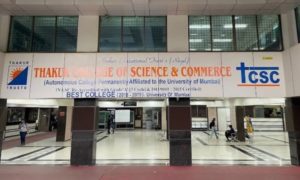In the land of great adventure, students are craving for some breathing space.
He’s yet to grow his moustaches but 14-year-old Saqib is articulate beyond his age when it comes to his remote hometown’s frontier façade, tourist traction and his rustic folks’ fixation for government jobs.
But it’s a rented reality of his crammed campus that quite often makes him lose his cool.
“Everyone wants to get education and become a government employee here,” says Saqib, sitting in his single-room school at Gurez’s Aminabad area. “But what to do, our hostile conditions hold us hostage here.”
The 8th-grader laments the fair-weather nature of Gurez — cutting it off from rest of the world for nearly six months. The upcoming winter is only escalating the sense of siege mentality in the region which once was a thriving town due to its Silk Route connection.
But the vicious cartographic lines of 1947 snapped those ties and made Gurez a climatic-control terrain, where gunners of two eyeballing armies remain wary with their war-stores.
In the shade of weaponry and weather, Saqib wonders if the organic valley receives an educational drive on pattern of last summer’s drummed tourism drives.
“The government is clearly dragging its feet when it comes to remodelling the education system of this remote area,” the boy says. “We can’t be held hostage by this ailing education system because we’ve to study anyway to be employed.”

A Govt School in Gurez. [FPK Photo/Sajid Raina.]
In Skinderpora of Gurez, a government middle school runs on the second floor of a shaky wooden building. The first floor serves as a cow shed. The relentless mooing and repugnant bovine gases derail the classroom concentration.
“Education system lacks accommodation and facilities in Gurez,” says Imtiyaz Samoon, a local social activist. “It’s hardly receiving any government attention.”
A quick fact-finding by this reporter revealed that at least fourteen government schools including primary and middle are operating from rented wooden structures facing neglect for decades.
In fact, six high schools including Chrowan, Achoora, Kanzalwan, Journal, Bulingder and Malingam area of the Gurez valley are headless for years now.
Besides, out of 82 lecturer posts, 30 are vacant for last several years, while out of seven school principal positions, five are unfilled.
“The picture is much more pathetic than these numbers,” says Mushtaq Ahmad, living nearby a single-room government middle school Safadab Neeru. “Students of eight classes are taking lectures in a single room here!”
These single-room schools not only deflate the claims of grassroots empowerment but also question the government’s digital education endeavor. Clearly, the ambitious drive of smart-schooling is yet to cross the Razdan Pass.
With the result, the remote region isn’t merely waiting for relevant education, but also renovation and remodeling. A damaged school building in Tulail, for instance, is yet to be repaired since 2008 when it faced snow-fury.
In some other places, students fund their own education. In the government middle school Skinder Neru Nallah at Tulail, the teachers collect money from students and pay rent to owner.
“This sad state of affairs often lead to an undesired outcome,” says Bilal Ahmad, a social activist.
“For example,” he continues, “Govt Higher Sec School at Kilshey has recorded a zero pass percentage in class 10th and 12th for last two years. The blame goes to government as it failed to appoint a principal among 10 vacant lecturer posts in the institution. We can’t expect good results from headless institutes.”

Entrance to classroom. [FPK Photo/Sajid Raina.]
Lack of basic facilities in several schools is also forcing a number of students from economically weaker sections of society to either discontinue their schooling or to get enrolled in another school.
“In short, Gurez’s school situation is disappointing,” Bilal says. “But don’t these remote-area students deserve good education?”
While that remains a barking question, the campus crisis is far greater than just a shelter-scarcity issue in the serene landscape on the must-visit list of every traveler.
For example, lack of physical teachers is another major issue, keeping students away from sports.
“We don’t have a sports teacher in school,” says Zainab, a 5th-grader from Gurez. “That’s why my parents are shifting me to Bandipora for some normal schooling now.”
The prevailing picture, says Mohammad Yusuf, makes one cry. “We’re worried about our children’s future,” Yusuf, a local resident, laments, “as they’re unable to get normal education here.”

The crammed campus. [FPK Photo/Sajid Raina.]
However, some distress-dispatches and pressing-petitions on the Gurez’s school situation have already been sent to higher officials, informs Ishtiyaq Ahmad, zonal education officer.
“It’s true that several schools are lacking in infrastructure facilities,” the education officer of Gurez says. “But we’re hopeful of getting positive response for proper building constructions for the students. Besides, efforts are afoot to fulfill vacancies in campuses.”
But till the dawn of educational development in his hometown, Saqib has to fight for his space in the crammed classrooms of Gurez. The daily struggle, however, pricks his passion and leaves him dissatisfied.
“As showpieces of remote tourism, these single-rooms are fine,” the articulate boy says. “But the education is entirely a different endeavor. It needs some serious treatment and a breathing space.”
Sajid Raina is an independent journalist based in Kashmir.








